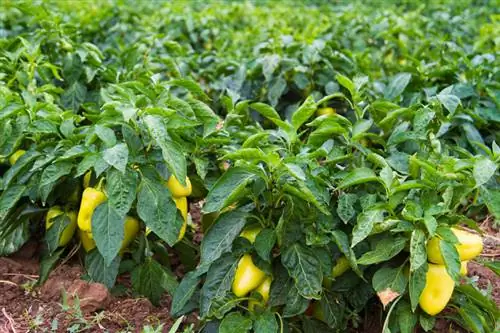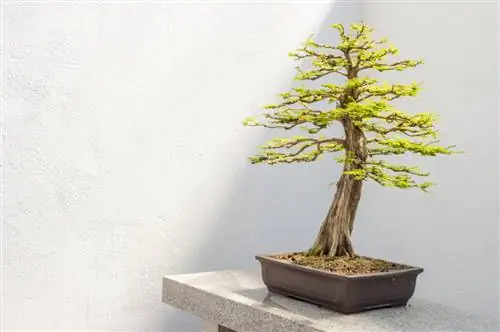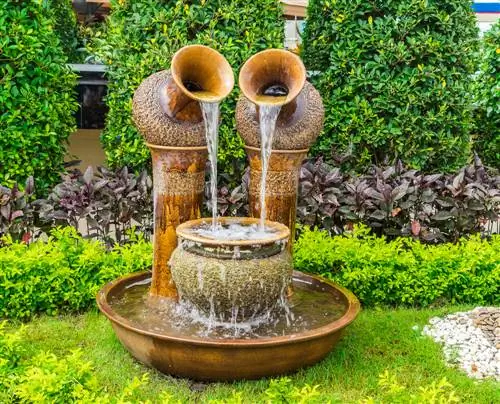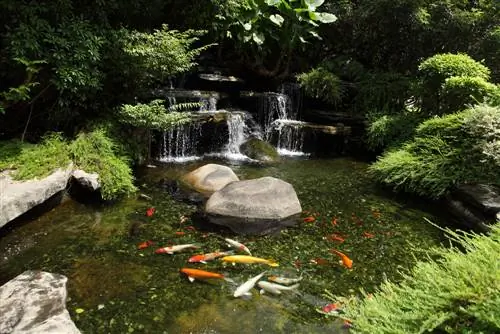- Author admin [email protected].
- Public 2023-12-16 16:46.
- Last modified 2025-01-23 11:20.
Its exotic beauty and effortless care make the Calamondin the ideal bonsai. This is all the more true because it is one of the few citrus plants that thrive wonderfully indoors even in winter. These instructions show you how to skillfully care for a Citrus mitis as a bonsai.

What is the best way to care for a Calamondin bonsai?
A Calamondin bonsai requires regular watering with lime-free water, weekly citrus fertilizer in summer and quarterly fertilization in winter. For optimal shaping, shoots should be cut after flowering and in March and the tree should be wired in styles such as Moyogi, Hokidachi or Shakan.
How to water the mini orange correctly
Regular watering with lime-free water is a gardener's top priority if you successfully care for your Calamondin bonsai. Pour the room temperature water directly onto the root disc as soon as the substrate has dried. This is required more often during the warm summer months than in winter. The citrus plant reacts to waterlogging and dryness by dropping leaves.
Fertilize Calamondin as a bonsai in a balanced way - This is how it works
Add a liquid citrus fertilizer (€6.00 on Amazon) to the water every week from May to August. The nitrogen it contains keeps growth going. Phosphorus supports flower and fruit formation. In winter, the nutrient supply continues at a low level by fertilizing every 4 weeks from September to April.
If you water your Calamondin with normal tap water, the impending iron deficiency should be prevented with special fertilizer. For this purpose, switch to ferramin or a similar iron chelate fertilizer every fourth fertilization.
Instructions for the perfect bonsai cut
Pruning is a double-edged sword on the Calamondin bonsai. Without pruning, the tree branches only very cautiously. If extensive pruning is carried out, the volume of flowers and fruits is reduced. How to cut with expertise:
- After flowering, allow the new growth to develop except for 3 to 4 pairs of leaves
- Then shorten the shoots down to 1 or 2 pairs of leaves
- If necessary, prune moderately at the end of wintering in March
- Thimout dead branches and water shoots
In addition, you can wire the bonsai from April/May to August/September to give it the desired shape. Calamondin are excellent for styles such as Moyogi (free, upright form) and Hokidachi (broom form). Shakan, the inclined shape, is also conceivable. However, if there is a lot of fruit, there is a risk that your bonsai will tip over.
Tip
If your Calamondin bonsai loses its leaves, the tree is primarily signaling a lack of light. This is especially true during the winter, which a Citrus mitis spends far away from its sunny home. Other causes include waterlogging or dryness when the evergreen mini tree sheds its leaves.






